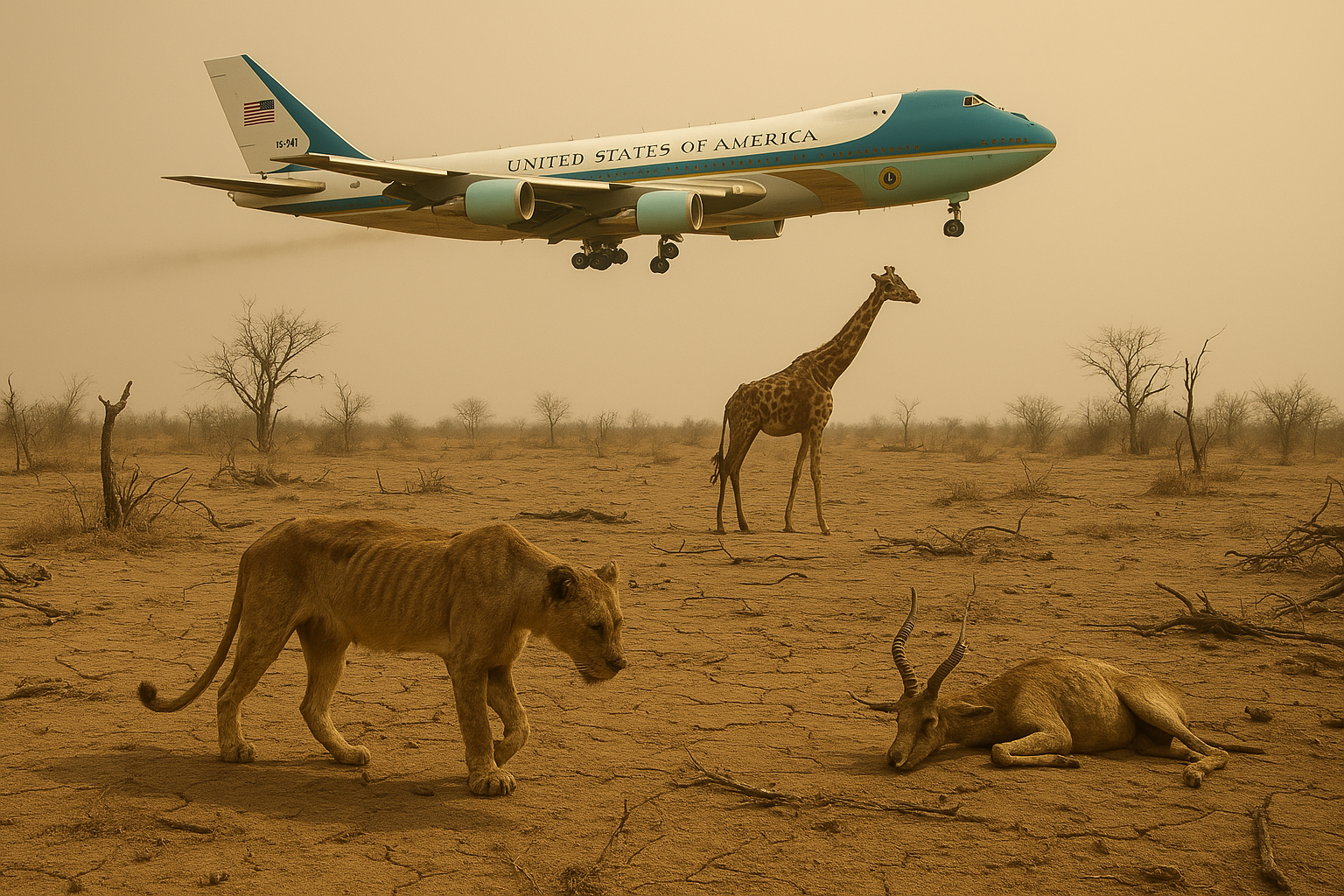Rethinking Climate Change: Beyond the Carbon Narrative
Climate change is often framed as a simple problem: rising carbon dioxide (CO₂) levels caused by human activity are warming the planet, and the solution is to cut emissions. While this explanation holds some truth, it does not tell the whole story. Climate change is a complex, multi-faceted issue that intersects with geopolitics, economics, corporate interests, and the broader degradation of natural ecosystems.
This article sets the foundation for a broader discussion—one that goes beyond mainstream narratives and challenges us to think critically about who controls the solutions, who benefits, and what alternatives exist.
The Problem is Bigger Than Carbon
Most climate discussions focus almost entirely on reducing CO₂ emissions. However, the planet’s climate system is influenced by many factors, including:
- Deforestation and Land Use Changes: Forests act as carbon sinks, but large-scale deforestation—driven by industrial agriculture and urban expansion—is reducing the planet’s ability to regulate CO₂.
- Industrial Pollution Beyond Carbon: Heavy industries release methane, nitrous oxide, and other pollutants that contribute to warming, acidification, and biodiversity loss.
- Financial and Political Interests: Many climate policies are shaped by economic and political incentives. Are they designed to protect the environment or maintain control over economies?
- Solar Cycles, Ocean Currents, and Natural Climate Variability: The Earth’s climate has always changed due to natural forces. Are these factors properly accounted for in climate models?
By expanding the conversation beyond carbon, we can develop a more holistic understanding of what is happening to the planet.
Who Controls the Climate Narrative?
While scientists agree that human activity is influencing the climate, the policy responses to climate change are often dictated by corporations, governments, and financial institutions that have their own agendas. Consider the following:
- Carbon Credits and Offsets: Large companies can buy carbon credits to “offset” their emissions, while smaller businesses and individuals are pressured to reduce their footprints. Does this create a fair system, or does it allow the wealthy to pollute while restricting others?
- The Green Energy Push: Renewable energy is necessary, but its supply chain is controlled by a few major players. Lithium, cobalt, and rare earth elements—key components for solar panels and batteries—are mined under conditions that raise environmental and ethical concerns.
- Global Climate Agreements: Agreements like the Paris Accord set emission reduction targets, but developing nations argue that these policies limit their economic growth while Western nations continue their own industrial dominance.
- Big Data and AI’s Role in Climate Policy: Climate models and policies are increasingly driven by AI and big data analytics. Who decides what the models predict, and what policies follow?
Understanding the financial and political forces behind climate policy allows us to question whether proposed solutions are truly about environmental protection or economic and social control.
Beyond Mainstream Solutions: A Decentralized Approach
Instead of relying solely on government-driven initiatives, we should focus on local, resilient, and independent solutions that empower communities. Some alternatives include:
- Investing in Localized Food Systems: Reducing dependency on global supply chains mitigates emissions and strengthens resilience.
- Energy Independence with Microgrids: Instead of massive corporate-owned solar and wind farms, communities can develop small-scale renewable energy solutions.
- Regenerative Land Management: Techniques like permaculture and reforestation help capture carbon while restoring ecosystems.
- Emergency Preparedness and Climate Adaptation: Communities need to prepare for extreme weather, rather than relying on slow-moving government responses.
By shifting our focus from top-down policies to grassroots action, we can create solutions that work for people rather than corporations.
A Call for Critical Thinking and Action
This series will explore the hidden aspects of climate change, questioning mainstream narratives while offering real solutions that go beyond political and corporate interests. Future articles will dive deeper into:
- The trade-offs of renewable energy and who controls the supply chains.
- How climate policies are used as tools of economic warfare.
- The role of AI and surveillance in climate initiatives.
- Localized, community-driven solutions for resilience and adaptation.
What can you do?
- Think critically about who benefits from climate policies and who controls the resources.
- Explore local and community-based solutions instead of waiting for government action.
- Share this knowledge and start conversations about independent climate resilience.
Stay tuned for the next installment: “The Systemic Drivers of Climate Change – What’s Being Ignored?”
Let’s rethink climate change—not as a crisis to be controlled from the top down, but as an opportunity for communities to reclaim resilience and independence.
